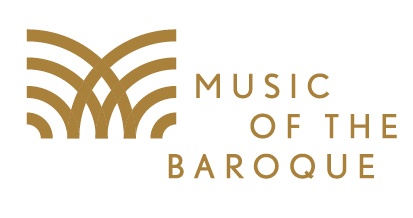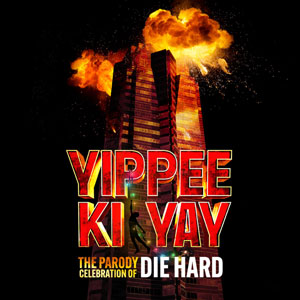
 [rating=4]There is always something serendipitous and exciting about attending a live performance, and the Music of the Baroque never disappoints. Sunday’s concert of Johann Sebastian Bach’s “St. Matthew Passion”, BW 244 at the North Shore Center for the Performing Arts was a three-hour feast that took place with a ruffle and a flourish: It was extremely well done and the fastest three hours that I can ever remember.
[rating=4]There is always something serendipitous and exciting about attending a live performance, and the Music of the Baroque never disappoints. Sunday’s concert of Johann Sebastian Bach’s “St. Matthew Passion”, BW 244 at the North Shore Center for the Performing Arts was a three-hour feast that took place with a ruffle and a flourish: It was extremely well done and the fastest three hours that I can ever remember.
The already familiar New Testament story of the crucifixion of Jesus Christ serves as the basis for Bach’s sacred oratorio, which was first performed in 1727. The operatic touches are some of the first elements we notice in this composition, beginning with the role of the Evangelist in the person of tenor Gwilym Bowen. He has a wide musical range and an exceptionally fine singing voice, plus his delivery pulls the entire production together. Brandon Cedel, in the role of Jesus, astounds us with his terrific bass-baritone vocals that add heftiness to the performance. Tess Altiveros (soprano), Krisztina Szabó (mezzo-soprano/alto), Paul Appleby (tenor), and Roderick Williams (baritone) round out the starring roles, with voices that complement each other very well; their arias are something to hear! Then there are the soloists who play specific characters in the presentation and heighten the tension throughout. They are Kevin Krasinski (Pilate), Ian Morris (Peter), Matthew Brennan (Judas), Katelyn Lee (Pilate’s Wife), Stephen Richardson (High Priest/First Priest), Dorian McCall (Second Priest), Hannah DePriest (First Maid), Hannah Dixon McConnell (Second Maid), and Julia Hardin and Joseph Shadday (False Witnesses). These singers are backed by two ripieno choruses (“ripiento” being the Italian word for “stuffing” or “padding”), one to the left and the other to the right side of the stage. In addition to both of these choruses singing the tutti parts, they are supplemented at the end of the first act by the Glen Ellyn Children’s Chorus, led by artistic director Evan Bruno. Needless to say, the vocalists have been meticulously rehearsed by chorus director Andrew Megill (who took a big bow at the end of the evening). Last but not least, is the double orchestra, which we see on the left and right sides of the stage. Dame Jane Glover conducted this ensemble of musicians with great ease and flair—and pointed out (and thanked) all of the outstanding performers.
There were many highlights—both vocal and instrumental—and I will only list a few here: These include the intense flute solo (Mary Stolper) plus bassoon (William Buchman) and double bass (Collins Trier) during Aria #6 “Repentance and Remorse”; the restorative oboe solo (Anne Bach) and double bass during at #20; the interspersed duet (soprano and alto) with choir at #27; the throng of violins at #39, which together with the bass notes, underlie the words “Have mercy, my God for the sake of my tears!”; and, of course, the lovingly played bassoons at #60.* If I had to have any one favorite number, it was the one-of-a-kind viola da gamba solo (Craig Trompeter) at #35 (starting with “Patience, patience”, and concluding with “indignity and scorn”); I was envious every time I heard Trompeter play the gamba! How gorgeous was that! The very full sound of having two orchestras and two choruses is breathtaking, as the sound largely builds during the course of the performance, especially at the close of the first half and just before the finale. Note that while the arias were originally created for the “St. Matthew Passion”, the chorales would have already been known to churchgoers at the time; hence, the concatenation of styles within this larger piece of Bach’s music.
The biggest surprise of the evening had nothing to do with the orchestra or the soloists or the various choruses, but happened to be the discrepancy between the English lyrics in the playbill and the captions being flashed above the stage. They were definitely not one and the same! It was obvious to me that some concertgoers were baffled, if not outright confused, when being confronted with two different forms of the English language. I even watched people disgustedly put down their playbills, and some even started grumbling about this while the concert was going on! As for myself, I was busily trying to figure out which of the two translations was more authentic or understandable. And I came up with the speculation below:
The New Testament was originally written in Greek and Latin. To make the Bible accessible to the common people, Martin Luther translated the New Testament into the vernacular, with his German version coming out in 1522. In today’s performance of the “St. Matthew Passion”, the segments of the libretto that Bach took directly from the Gospel remain in the original German language. This follows the custom of the Lutheran church that Bach once attended in Leipzig—which frowned upon paraphrasing anything from the Bible. However, in those segments written by Bach’s librettist, Christian Friedrich Henrici (known as Picander), the language has been updated and modernized. (Note that Picander’s invented lyrics were not italicized in today’s playbill, whereas direct quotations from the Bible were). That being said, King James was interested in the popular access to the holy Scriptures and made it his mission to have the Bible translated from Greek and Latin into English, with his completed volume published in 1611. In our playbill, the English text is taken from the King James version of the Bible, plus all the supplemental German lyrics were translated into Shakespearean English to match. In contrast, the captions being projected above the stage were a direct translation from the original libretto and in modern English. Most problematic, however, were those few times when the wording in our playbill was just plain inaccurate. The most obvious example occurred towards the end of the concert when we read, “My Jesu, fare Thee well!”, while the German original stated, “Mein Jesu, gute Nacht”, or “Good night.”
But such a quibble about language is a minor one, considering the impactful performance of the Music of the Baroque orchestras and choruses on this Palm Sunday evening! Those who are religiously-minded will have found this to be an awe-inspiring and thrilling production. I myself, however, have to ask why the composition ends as it does: minus the Resurrection. This is a question to be left for another day.
“St. Matthew Passion” (a/k/a “Passion of our Lord Jesus Christ According to St. Matthew”) was performed by Music of the Baroque on Sunday, April 2, 2023, at the North Shore Center for the Performing Arts, 9501 Skokie Boulevard, in Skokie, with a subsequent performance on Monday, April 3, at the Harris Theater for Music and Dance, 205 W. Randolph Drive, in Chicago.
Both performances began at 7:30 p.m.
 For more information and to purchase tickets for future performances of MOB, please go to: https://www.baroque.org/ or call 312-551-1414.
For more information and to purchase tickets for future performances of MOB, please go to: https://www.baroque.org/ or call 312-551-1414.
Music of the Baroque is a resident company of the North Shore Center for the Performing Arts. To learn more about the venue, their future offerings, and ticket prices, visit: https://northshorecenter.org/.
To learn more about the Harris Theater, their future offerings, and ticket prices, go to: https://www.harristheaterchicago.org/.
COVID requirements vary from venue to venue and are subject to change. Currently, masking is optional. For information about COVID protocols, visit: https://www.baroque.org/2022faq.
*Note that it is 20th century scholars who numbered all the vocal movements/sections of the St Matthew Passion.






More Stories
“The Elements”, Music of the Baroque reviewed by Julia W. Rath
Bernie G. Yvon Scholarships for 2024-2025
“An Experience That Makes a Difference”